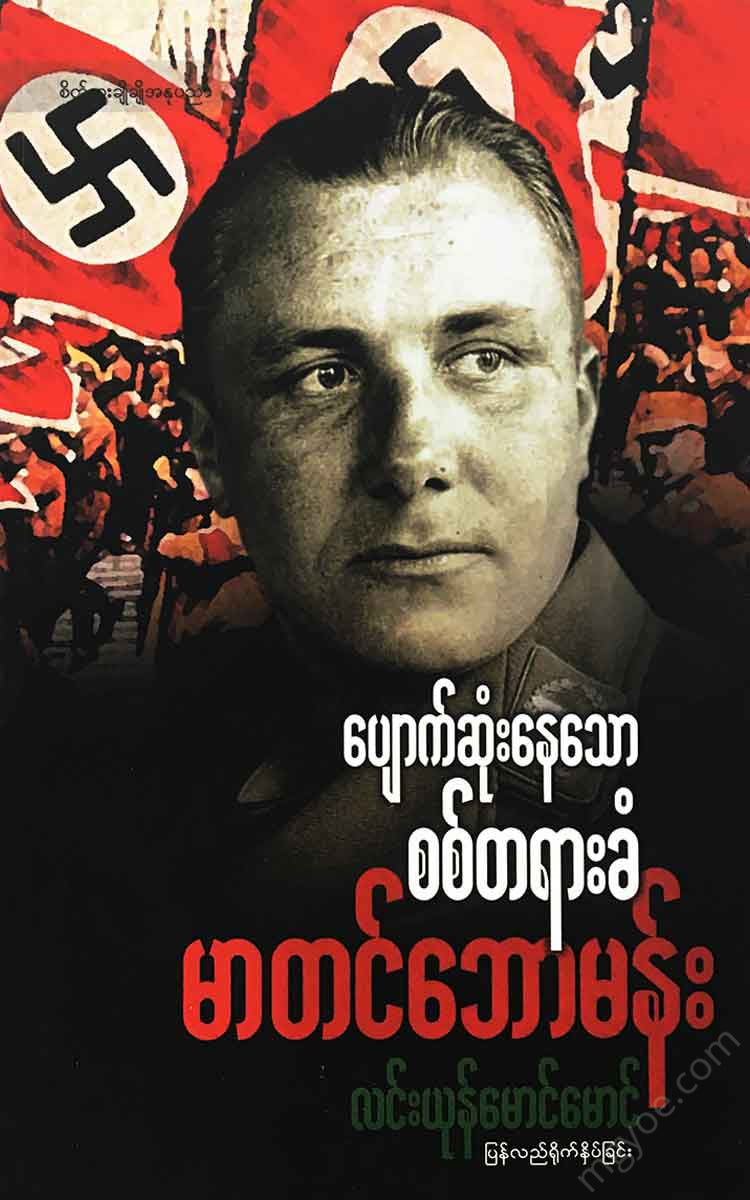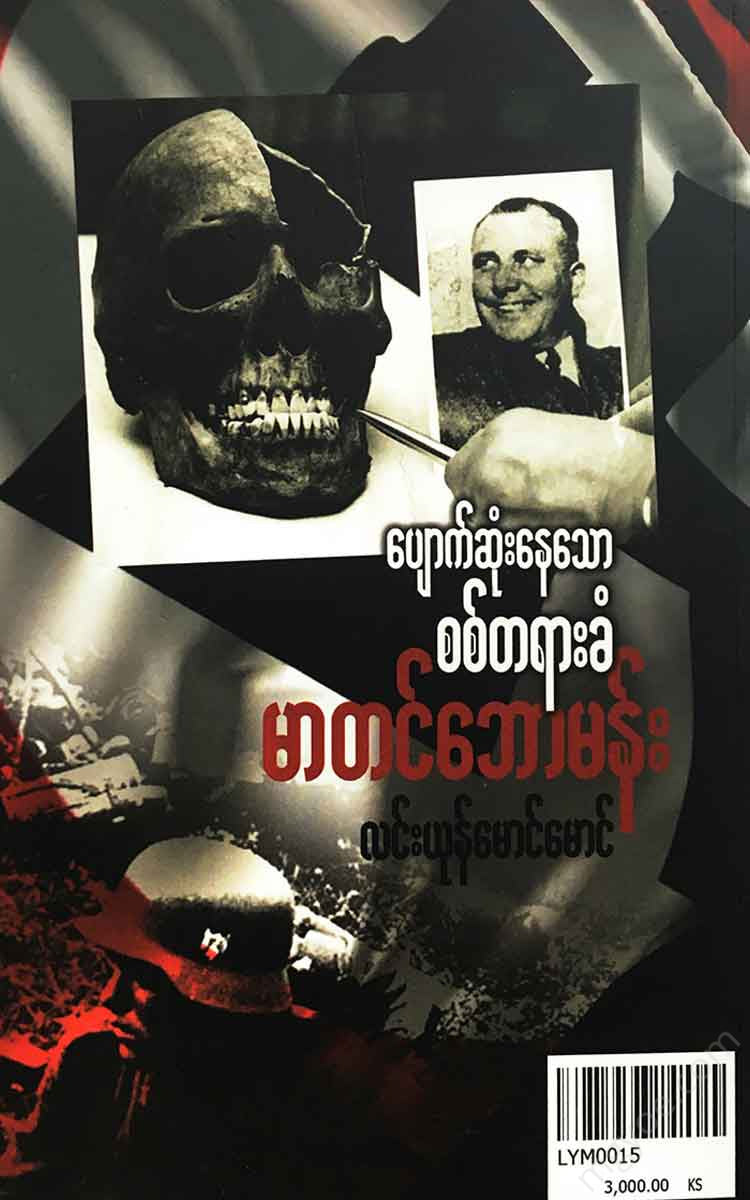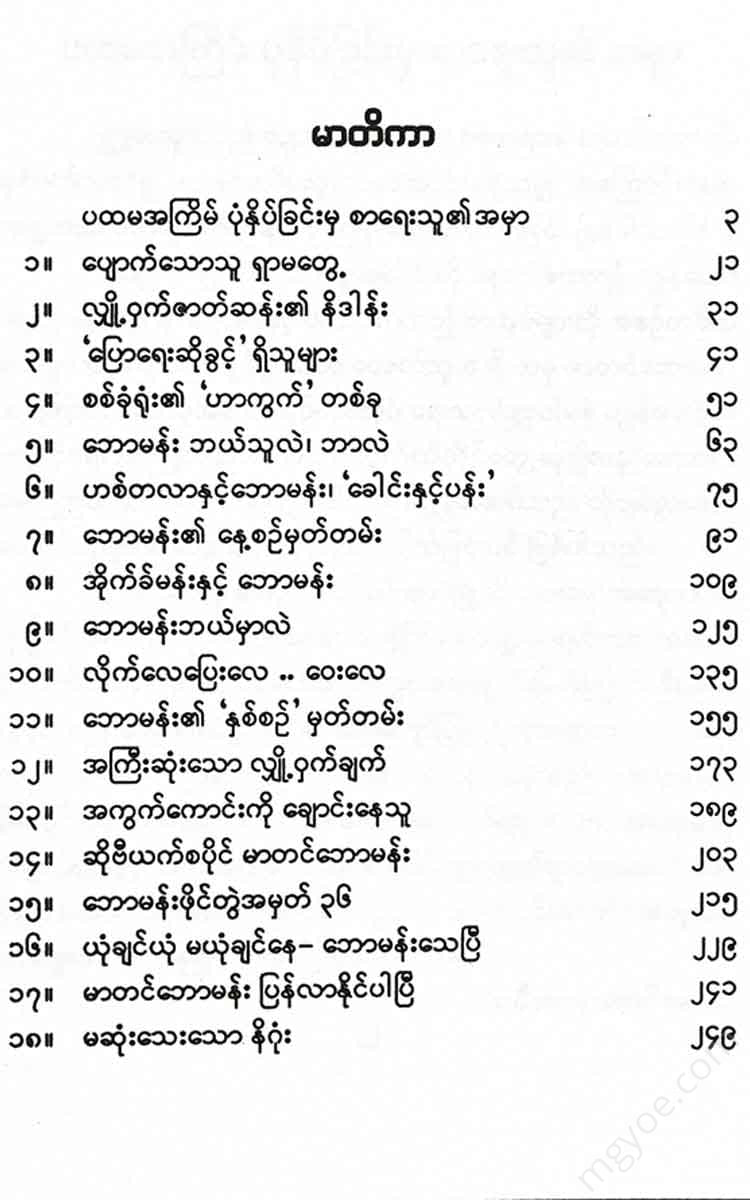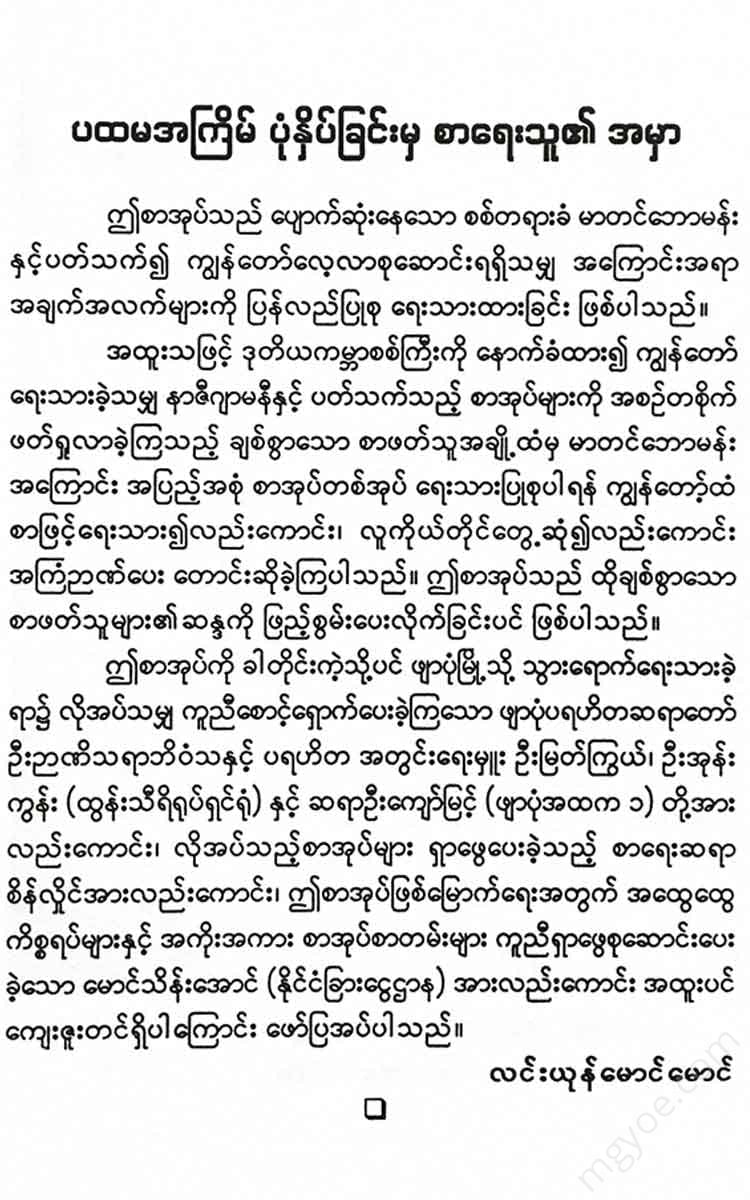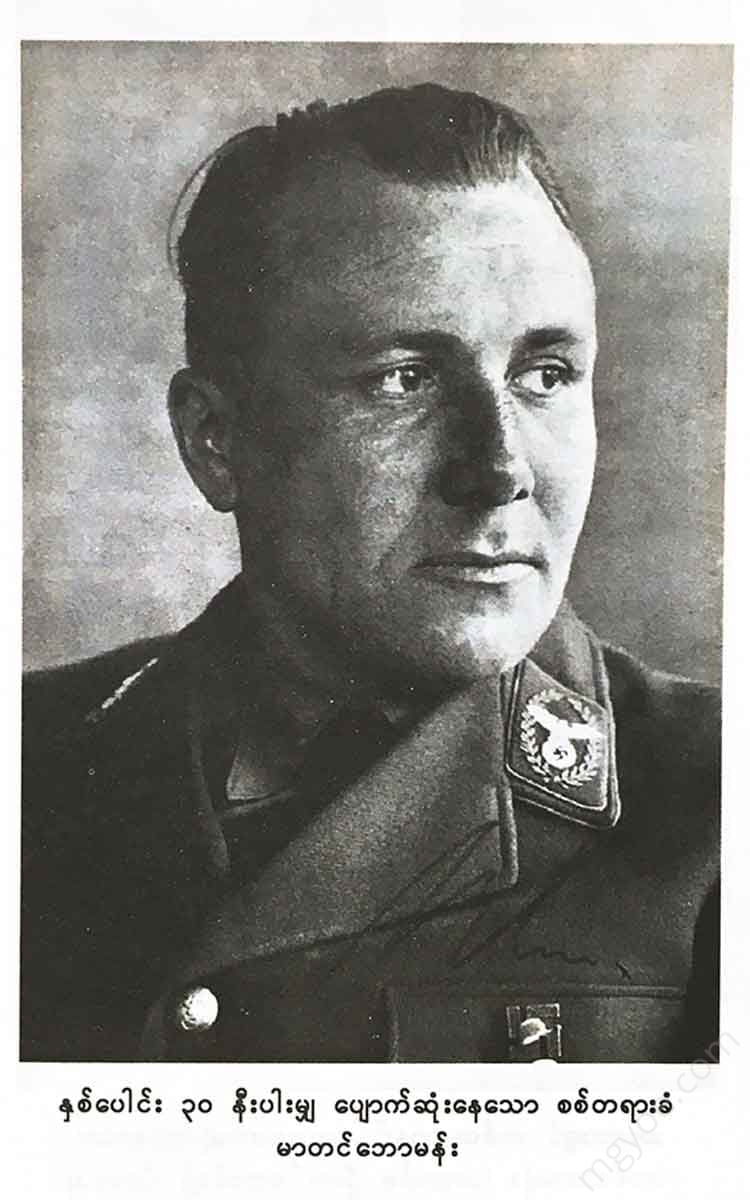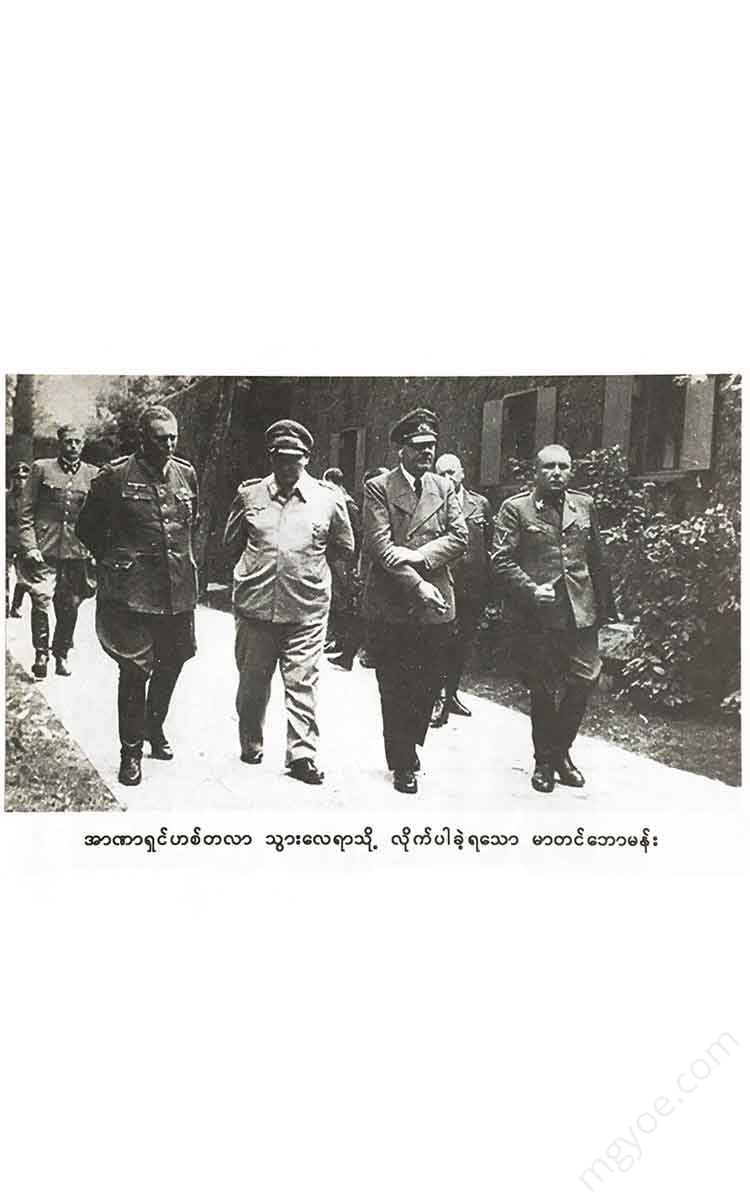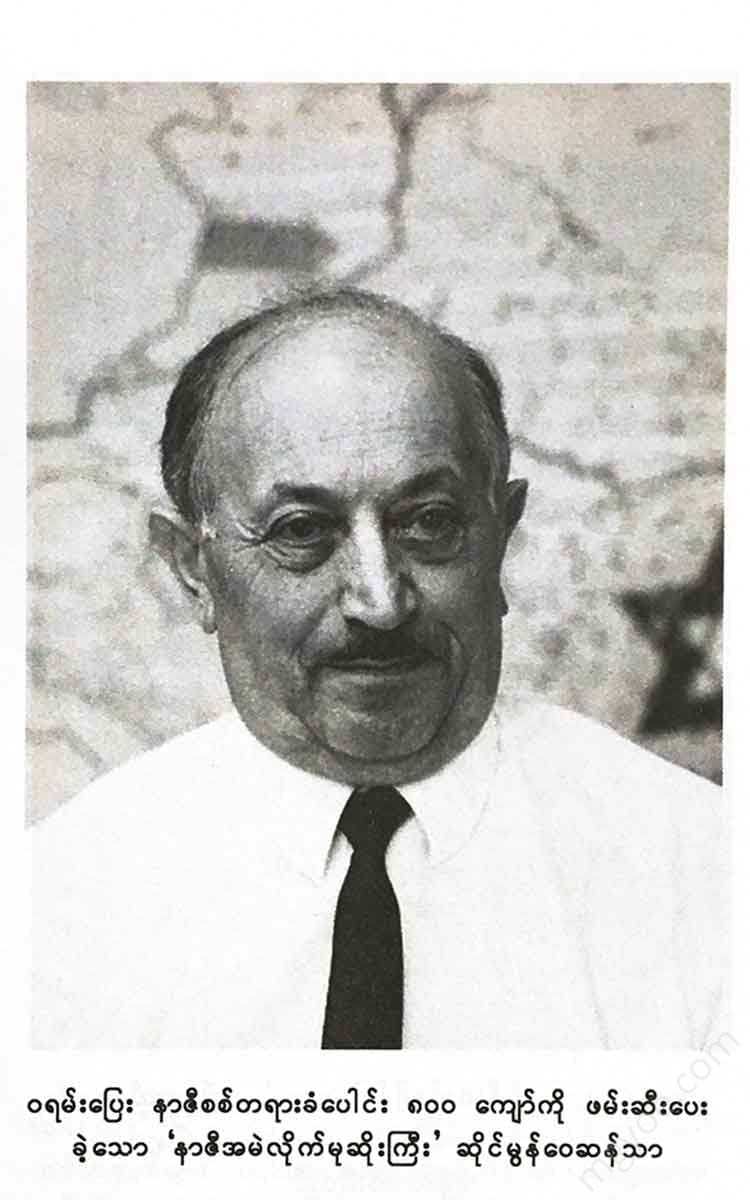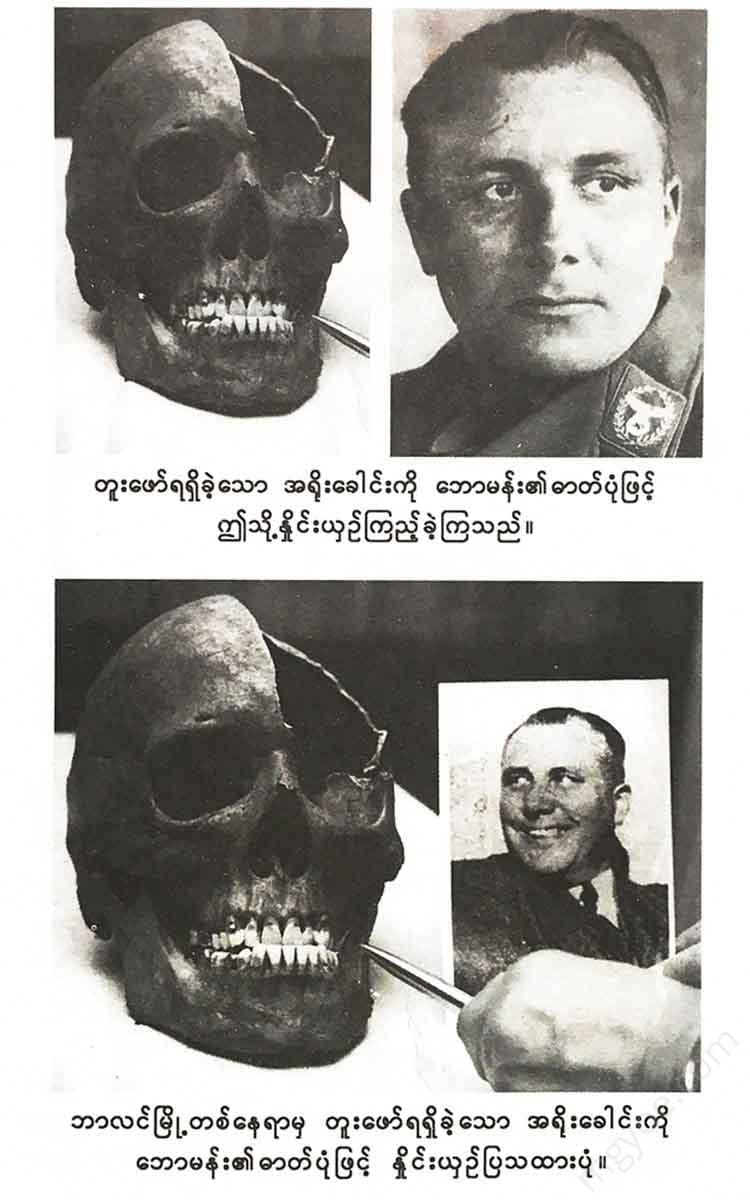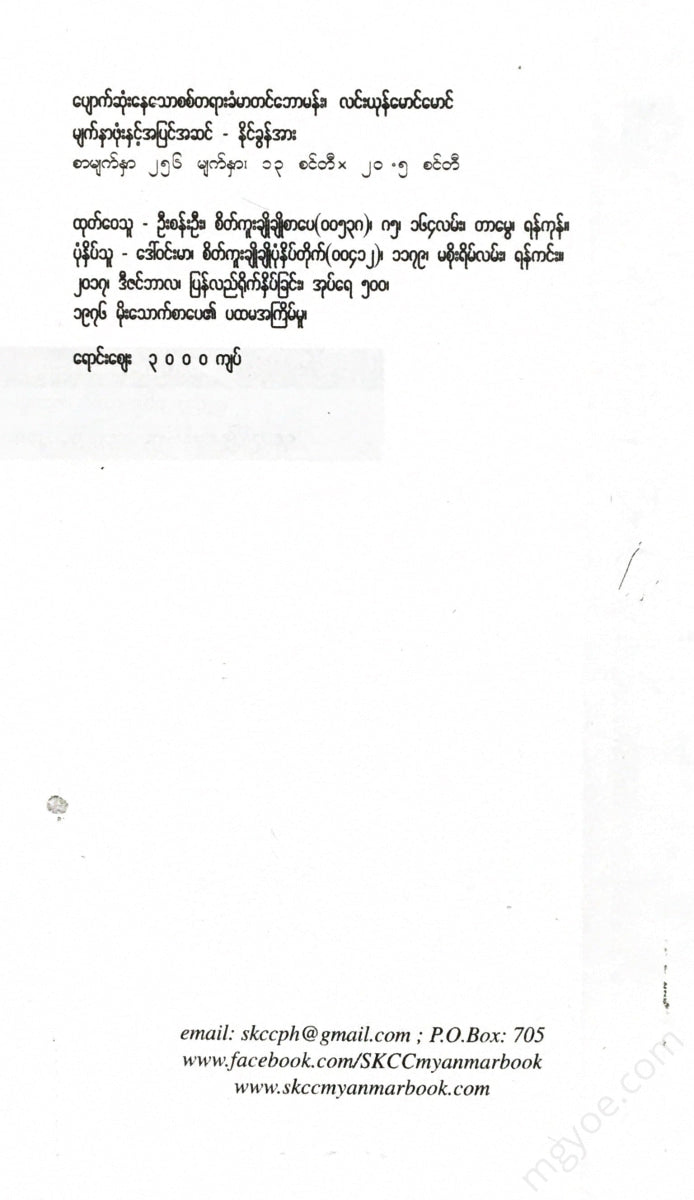စိတ်ကူးချိုချိုစာပေ
Lingyeon Maung Maung - Missing War Criminal Martin Baw Mann
Lingyeon Maung Maung - Missing War Criminal Martin Baw Mann
Couldn't load pickup availability
At dawn on May 2, 1945...
In the underground bunker in the courtyard of the government building, known as the "Shooting Cellar" in Berlin.
The surviving top officials of the Nazi Empire, their bodyguards, and their servants, were restless and agitated.
Because today is the last day, the last time, of the Third German Reich, and it has reached its final stage.
That's right. Their leader, the dictator Hitler, is dead. Hitler's beloved wife, Eva Braun, has gone with him.
All efforts to delay the surrender had been in vain. General Weidling, the commander in charge of the defense of Berlin, had ordered all German troops to cease their futile resistance, and had already informed the top brass in the bunker. The last remaining bottles of rum and cognac were gone, and only the shells remained. Now... what were we going to do?
Will they surrender?... As soon as they thought this, a shiver ran down their spines from everyone in the dark hole. With trembling hands, each of them examined the gold-stitched insignia of their security forces on their chests and shoulders.
Would they try to break through the Soviet encirclement? That would be a fool's errand. There was no news of the last group of people who had tried to break through the "Tiergarten" gap and towards the Havel River to the west. Two or three days ago, it would have been possible to escape by air from the vast Blottenberger Field. Now the entire Tiergarten Field had fallen into the hands of the Soviets. Moreover, the Reichstag, the parliament building, had been captured by the enemy.
So now the front line, which can hardly be called a “war front,” was not far away, but only 100-200 yards south of the Reichstag. The Nazi leaders, who were in a frenzy, were frantically planning to escape from their hiding places, as they repeatedly imagined the streets and alleys of Berlin, where they usually walked.
In the end, they all decided to break up into groups, create their own destiny, and escape in their own way, all by consensus.
Here, the location and situation of the city of Berlin, the surrounding area, need to be described in detail so that it can be seen in the eyes like a map. The central government building is a large underground building dug into the garden in the palace courtyard and built with a strong tunnel. The garden where this underground building is located is at the corner of the Wilhelmstrasse and the narrow Vossstrasse, which is famous as the "Ministerial Office Street", and the main entrance to the government building is on that side. Opposite the entrance to the building are the Wilhelmstrasse, the Kaiserhof Hotel and the office building of Propaganda Minister Goebbels.
Once a beautiful place for Berliners to relax and hold Nazi Party rallies, Wilhelminian Park is now a desolate cemetery, scarred by Soviet artillery fire, with large craters and ravines strewn with rubble. Similarly, the Kaiserhof Hotel, which served as Hitler's headquarters until the Nazis came to power in 1933, and Goebbels' Propaganda Office, where Hitler's every directive was issued, have been completely destroyed by the bombing and shelling, and are now a pile of rubble.
How can anyone escape from that place, that department, through what exit?
If we ran south along the William Road, would we be able to escape? There was no hope of escaping from that road. It would be like digging our own grave. So if we ran west through the “Taiyagart” gap, would we be able to escape? If we ran down that road, we would surely be “fallen before a tiger” and be caught by the Soviets. If we ran east, would we not be able to escape? Absolutely not. It would be like “dancing through the village of death” amidst the Soviet artillery shells that were falling every second. But everyone agreed that if we ran north, there was a way out.
True. There is absolutely no hope of escape from the east, west, or south, but if you can find a way out by heading north, you may have a chance. If you leave the hole and head straight north, you will reach the banks of the Spree. To get there, you must first walk about two furlongs through the dilapidated buildings on the "Antar Linden" street. Then you will reach the intersection of Friedrichstrasse, which is at the intersection with the Antar Linden street. From this intersection, if you go straight to the left, you will reach the Friedrichstrasse station on the banks of the Spree. This station can also be reached by underground. Once there, you will have a considerable amount of breathing space. From there,
Through Berlin...
The crowd in the palace courtyard was also quite small. It must be said that there were almost four hundred people in total. Among them were officers and soldiers of the "Nordlin" corps. The remnants of the "Baranfanger" assault force who had returned unscathed, and a large number of ground troops from the Air Force who had been entrusted with the defense of the government palace. Among them were even the Spanish soldiers of the notorious and brutal "Blue Corps".
They were joined by a group of high-ranking officials, servants, secretaries, and aides-de-camp who had emerged from Hitler's lair. In the crowd, they saw a short, stocky man in the uniform of a security officer with the insignia of a chief of staff.
To put it simply, the leader of the crowd, the commander, was not relying primarily on the soldiers for their liberation. He was relying on the three tanks that were still with them, and
He relied solely on artillery and armored vehicles that could be aimed at the target.
The wounded and completely paralyzed patients were loaded onto tanks and then separated into groups. Some groups decided to retreat through the underground tunnels along the railway tracks. All of the groups had agreed to meet again at Friedrichsplatz station and regroup.
However, when some groups reached the designated "Waidenhammar" area on the banks of the Spree River, they unexpectedly came under continuous and heavy fire from Soviet artillery and tanks. Here, the Nazi deserters, who had been running for their lives, were scattered among the Soviet artillery and machine-gun fire, which was exploding in a hail of bullets and bullets, and were scattered in a heap. At that moment, everyone had to run for their lives.
x x x
The above events are all that has been gathered, with solid evidence, about the fate of the Nazi leaders who tried to escape from the underground bunker and government building, the last refuge of the German dictator Hitler, in the early hours of the morning of May 2, 1945.
That morning, some of those who had tried to escape by taking cover behind three German tanks on the banks of the Spree River were cut to pieces by Soviet artillery and bullets. Others managed to escape and were captured by Soviet troops while they were still in Berlin. Others managed to escape in disguise. However, this “death was not a fate”
